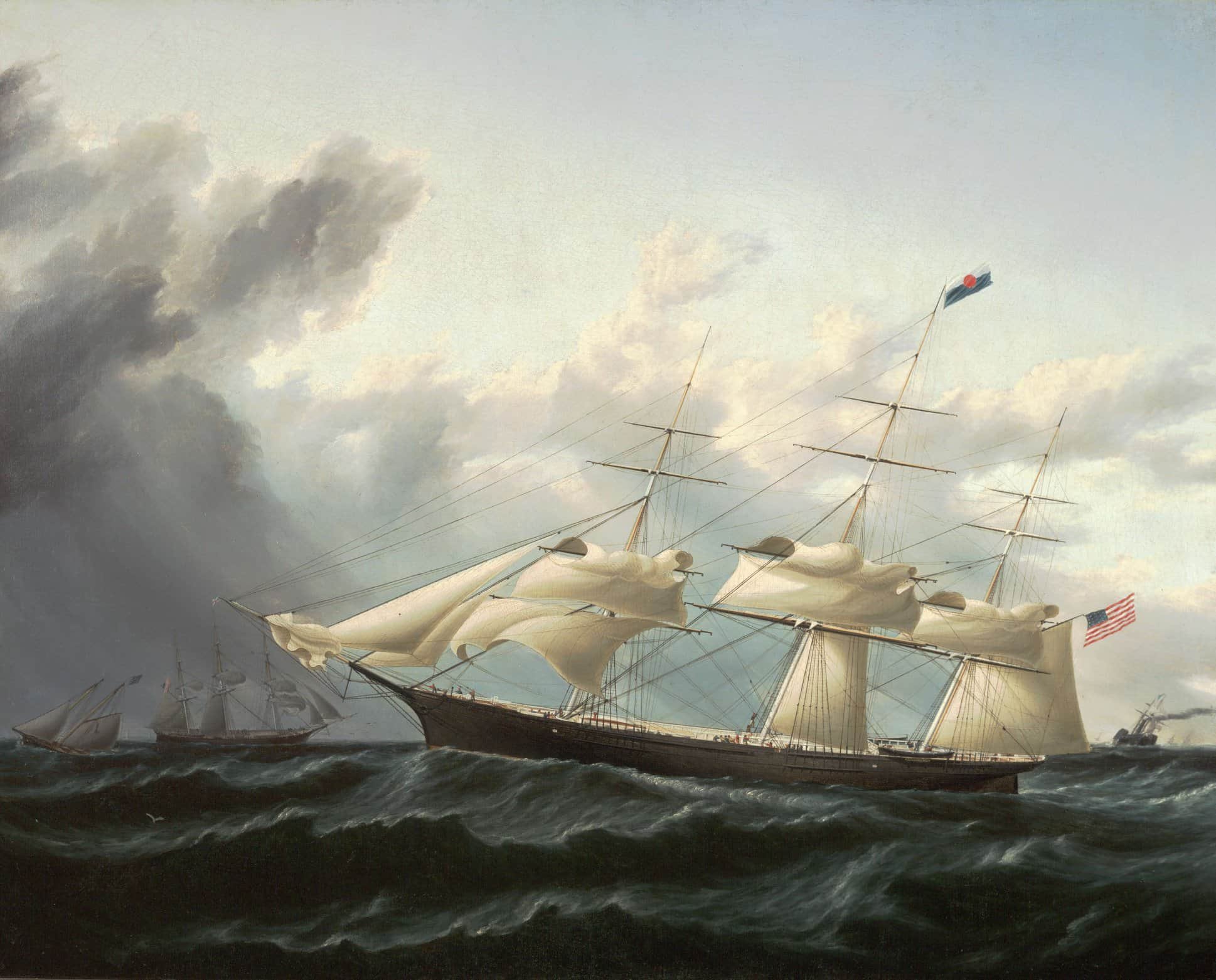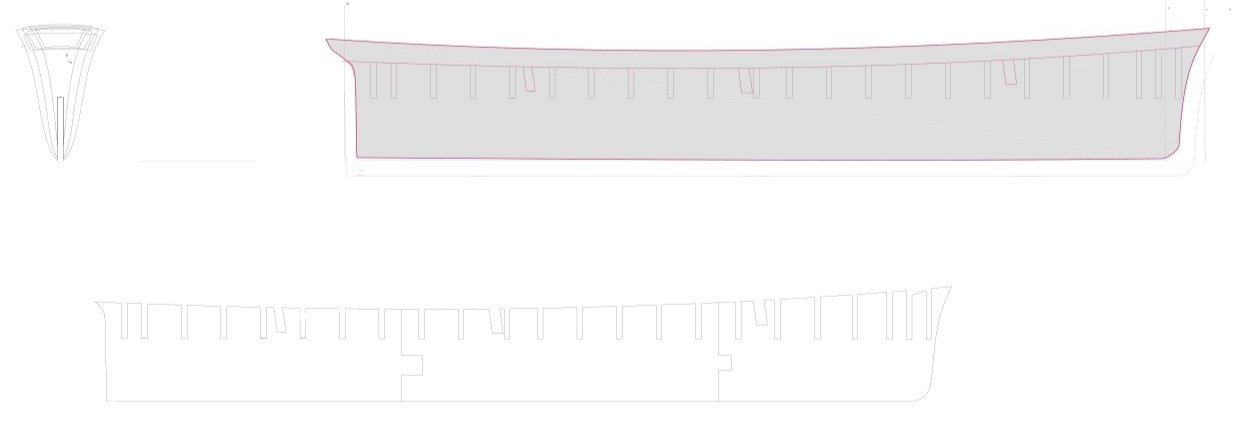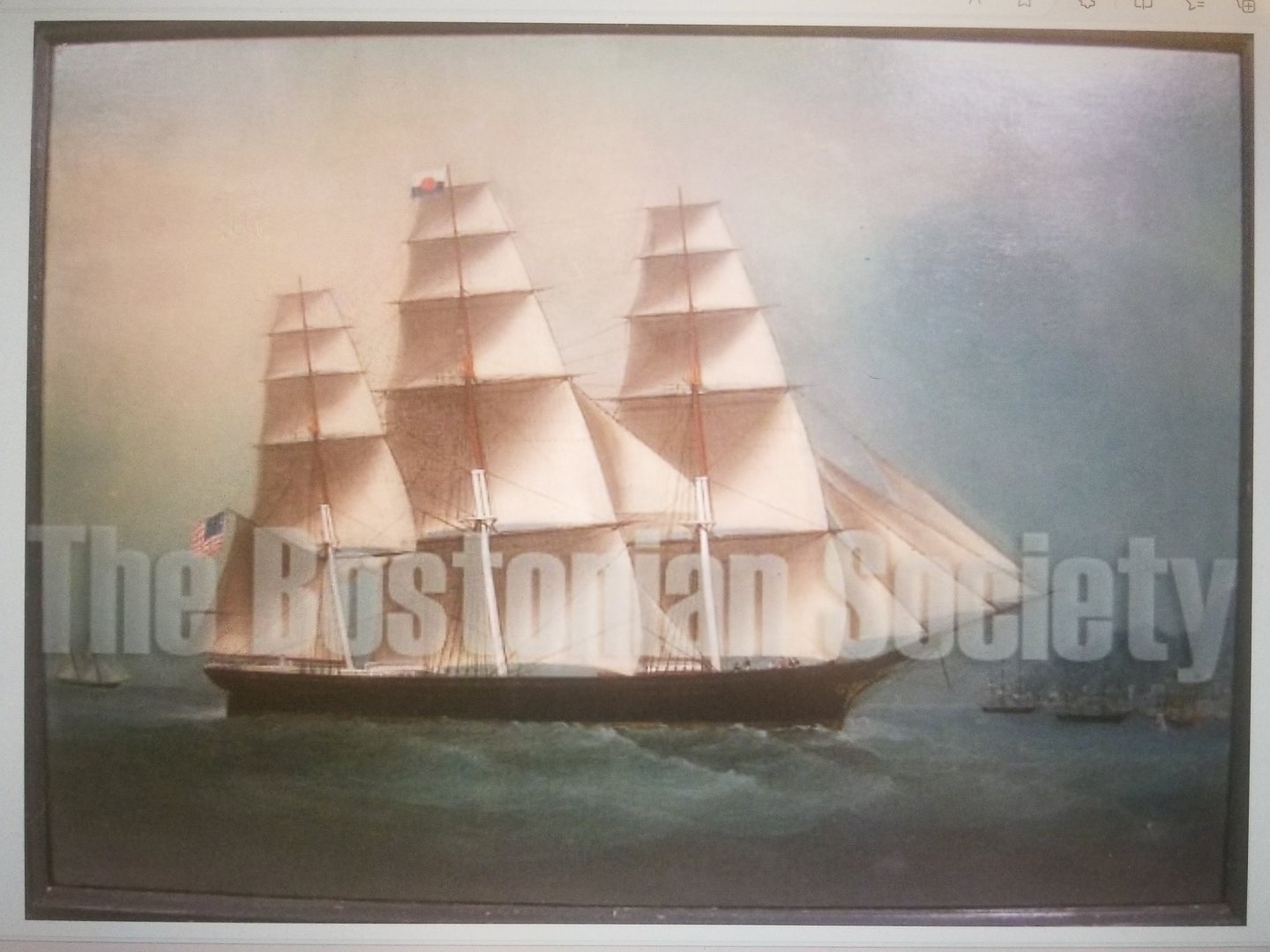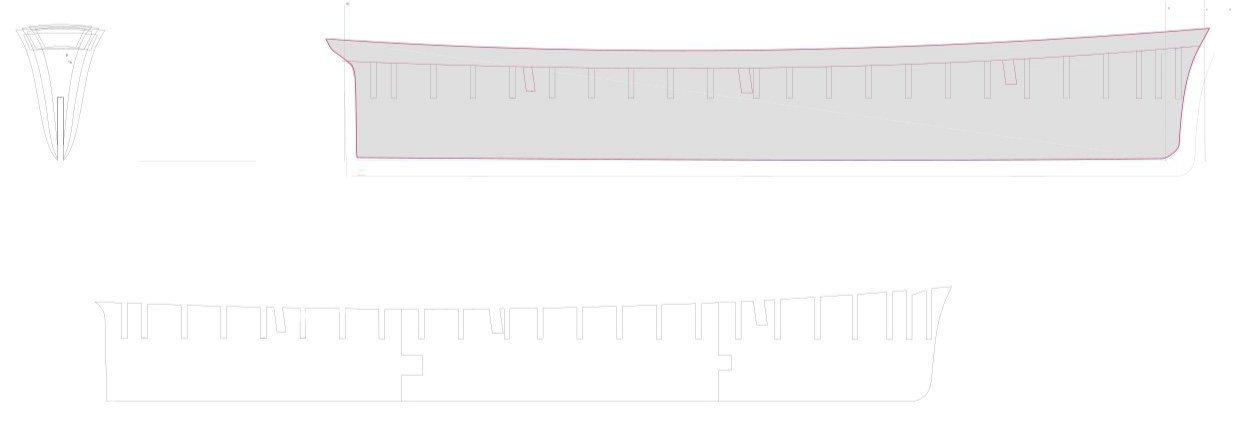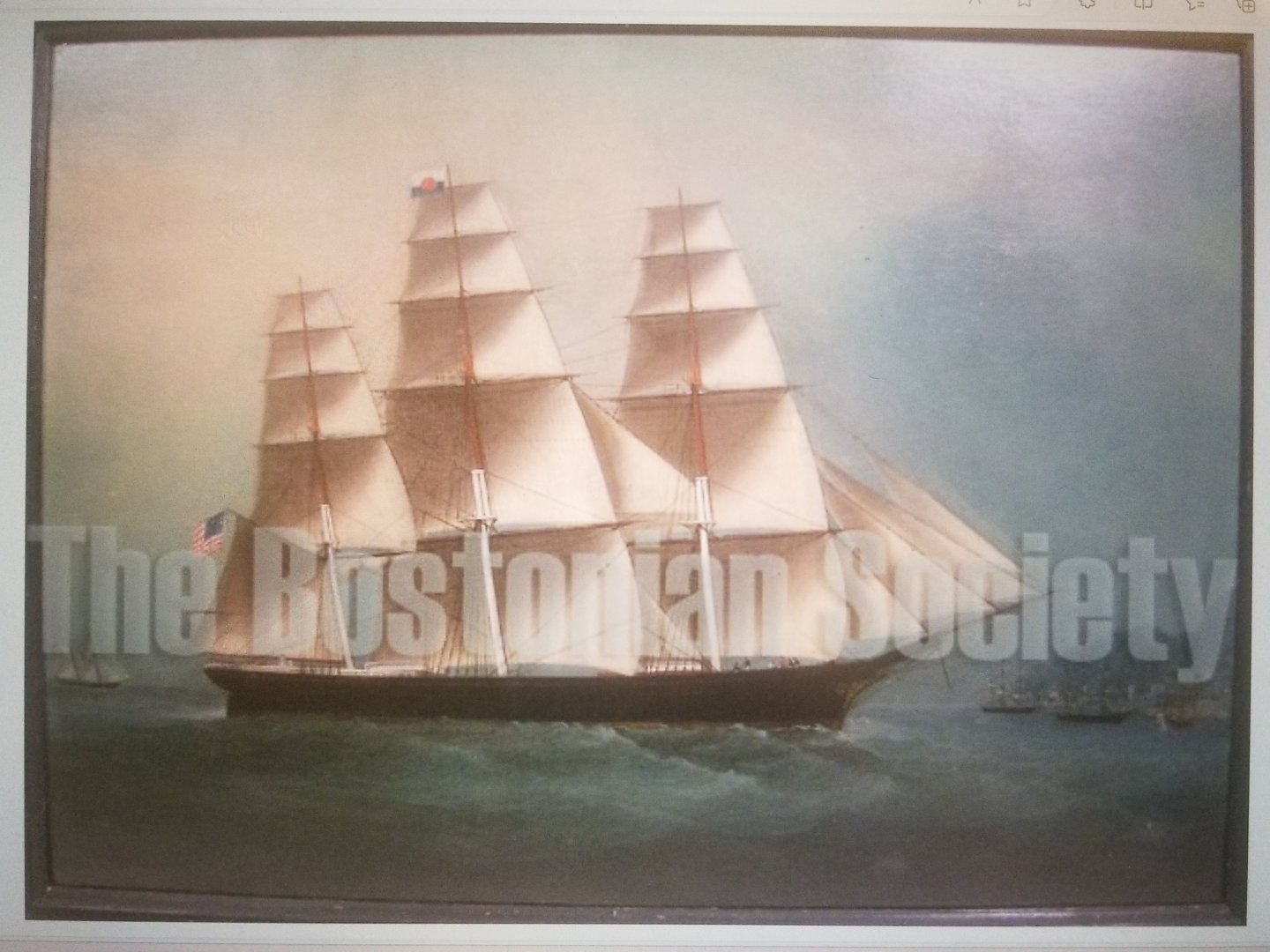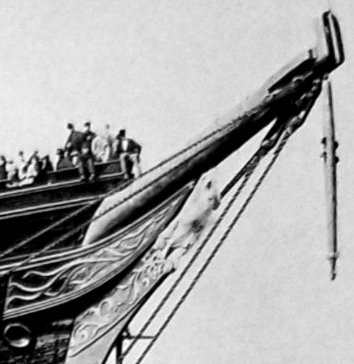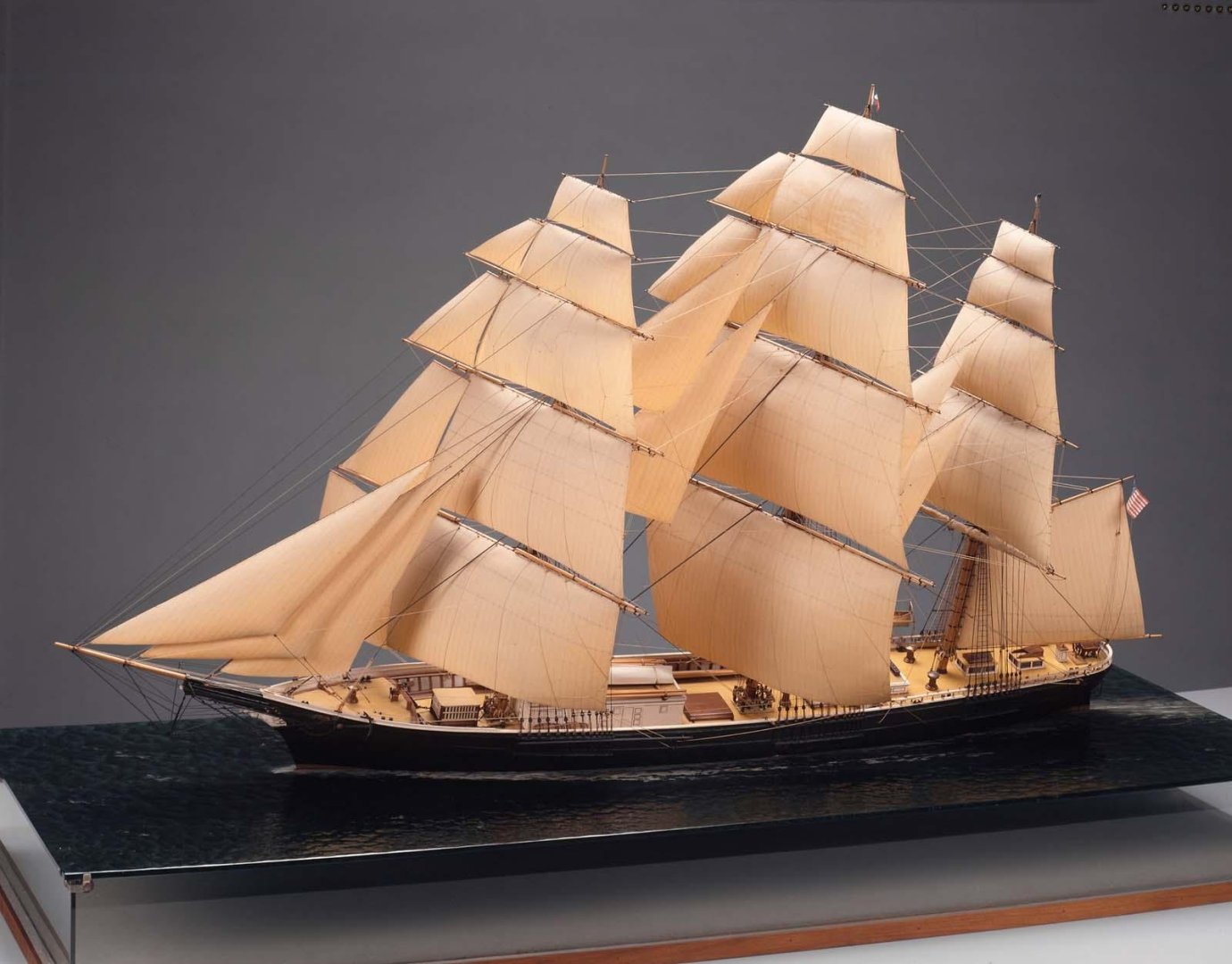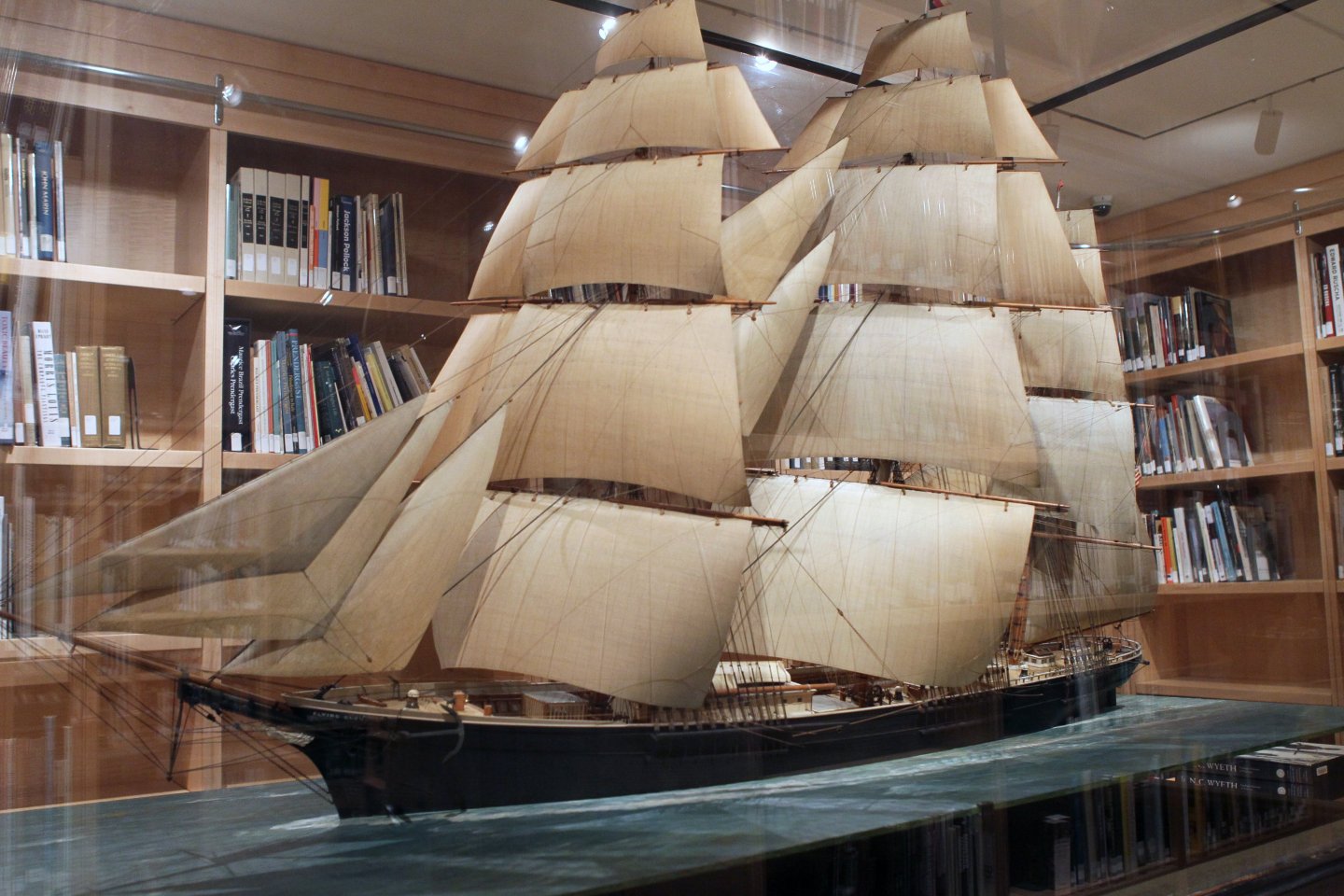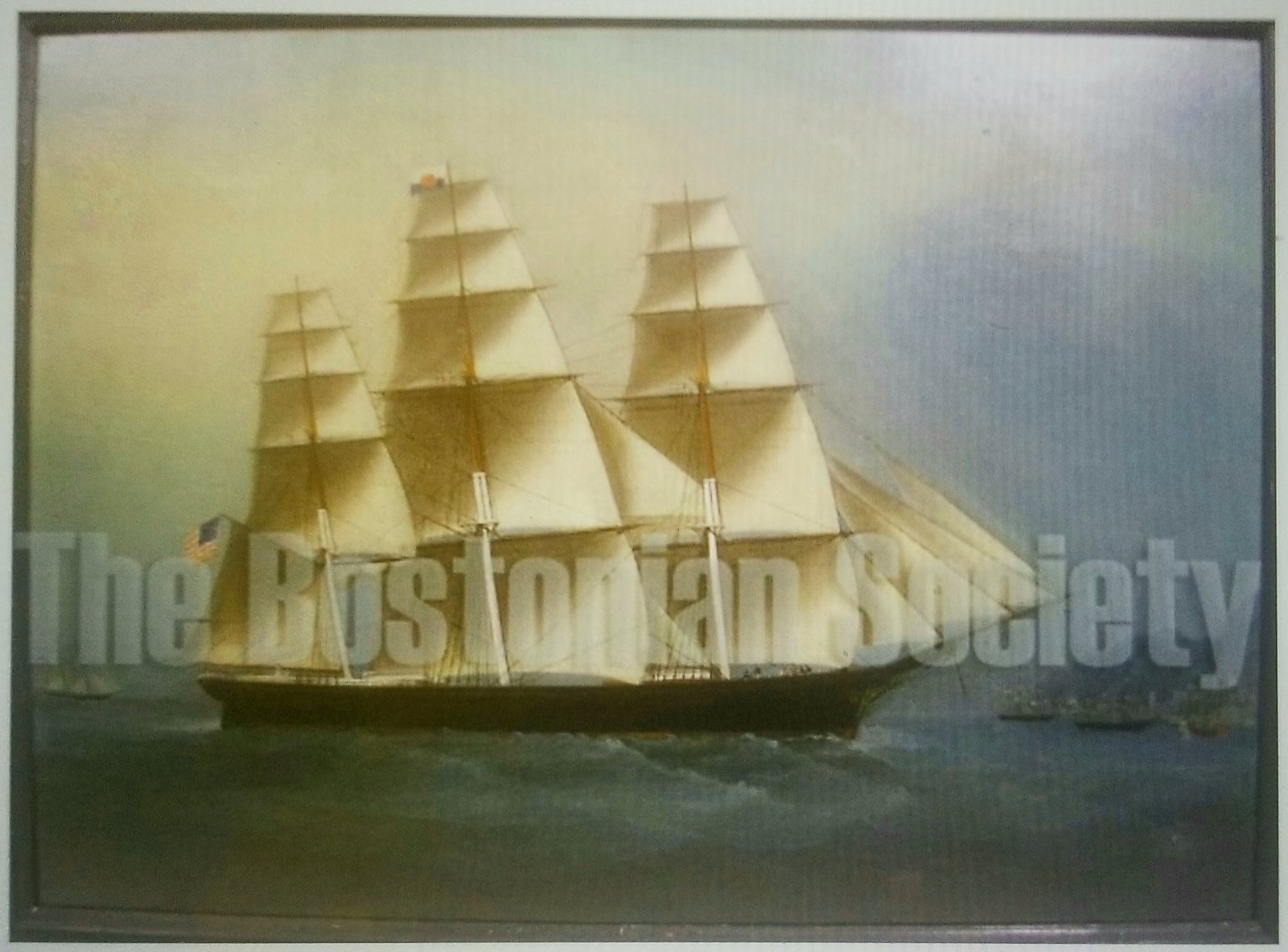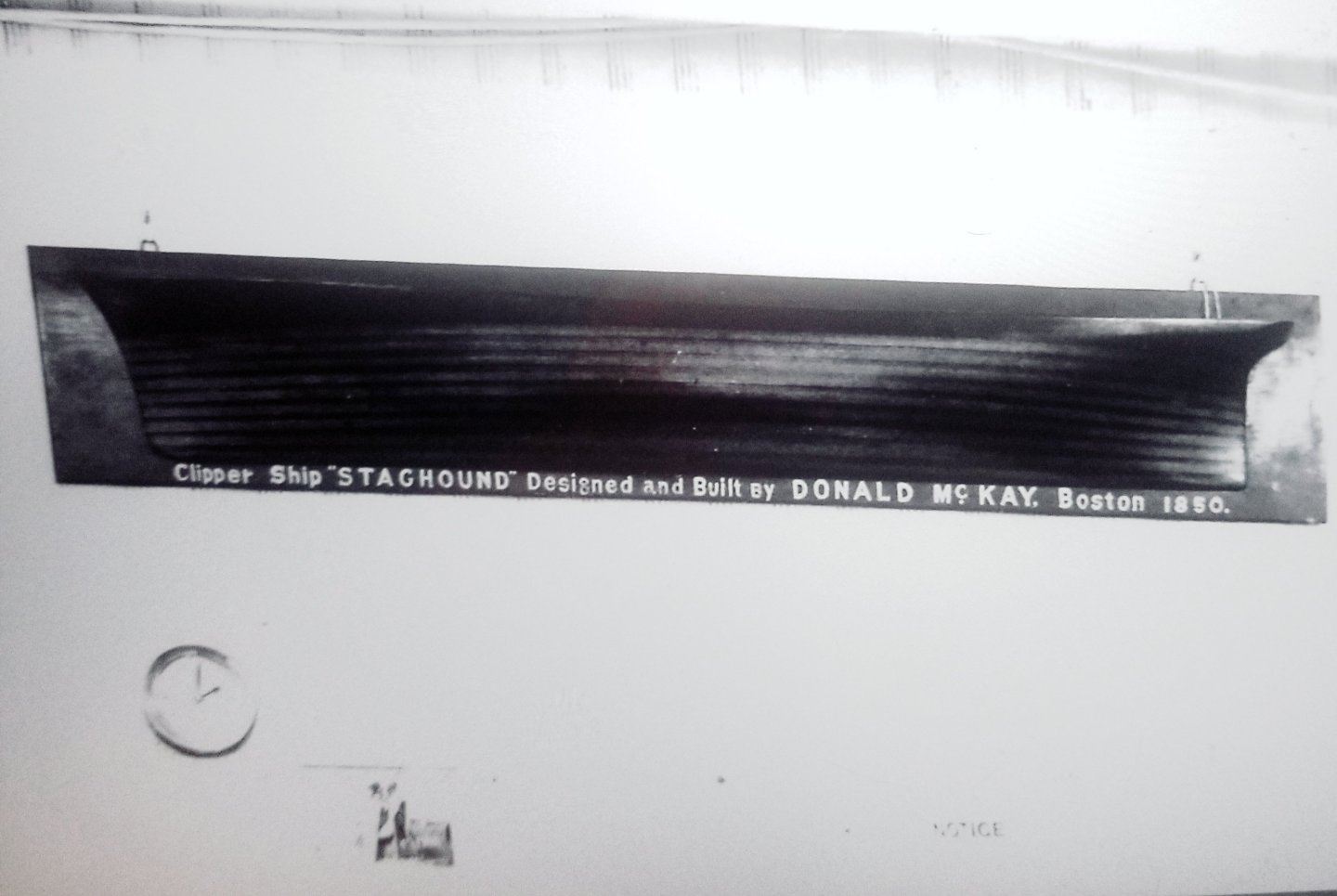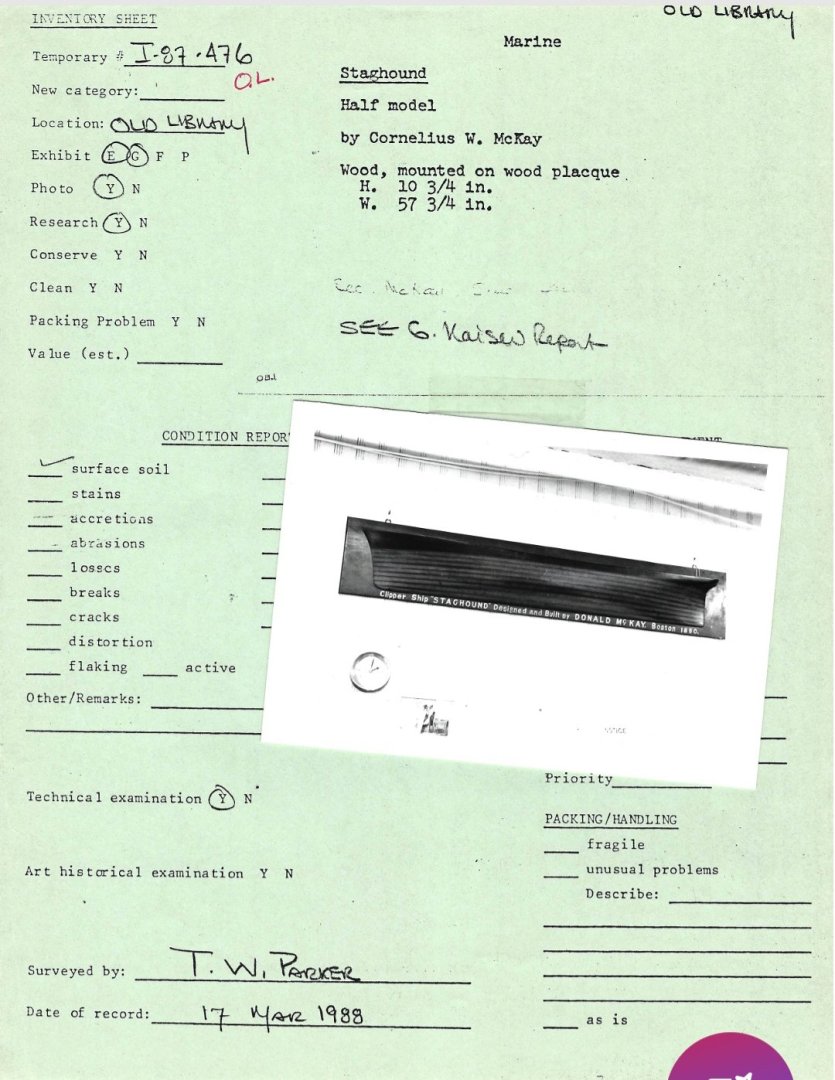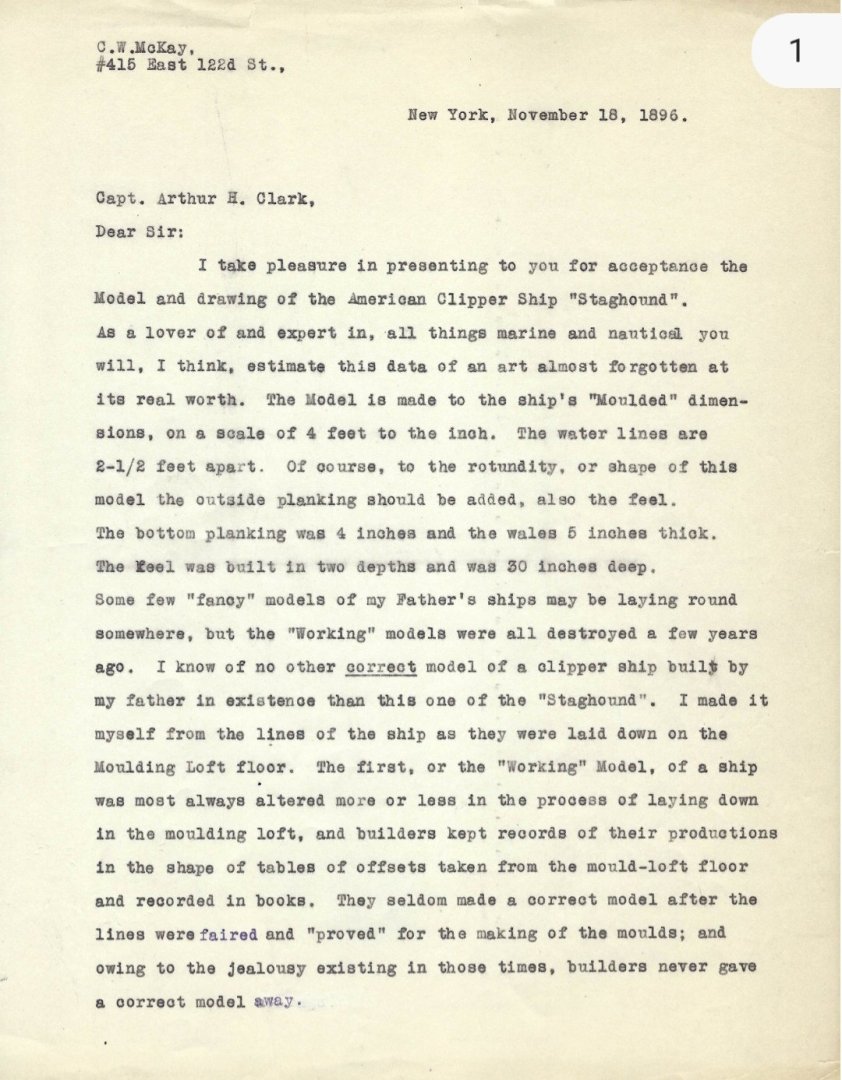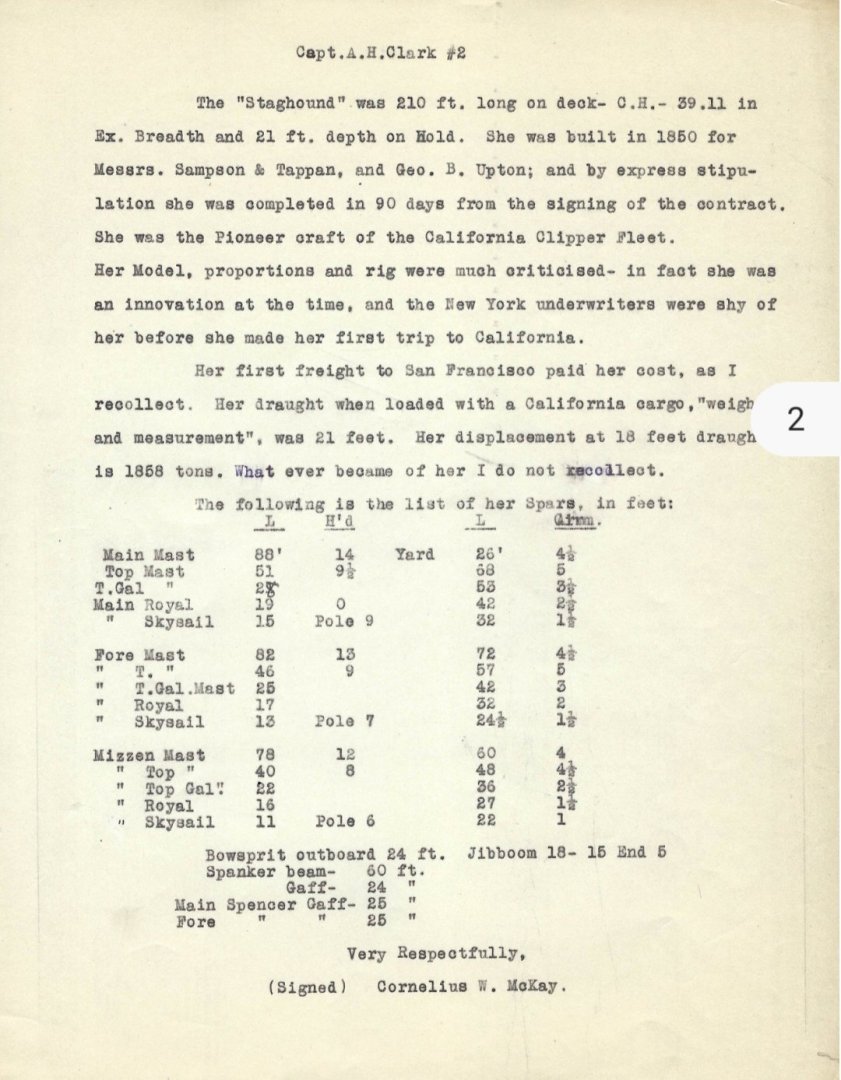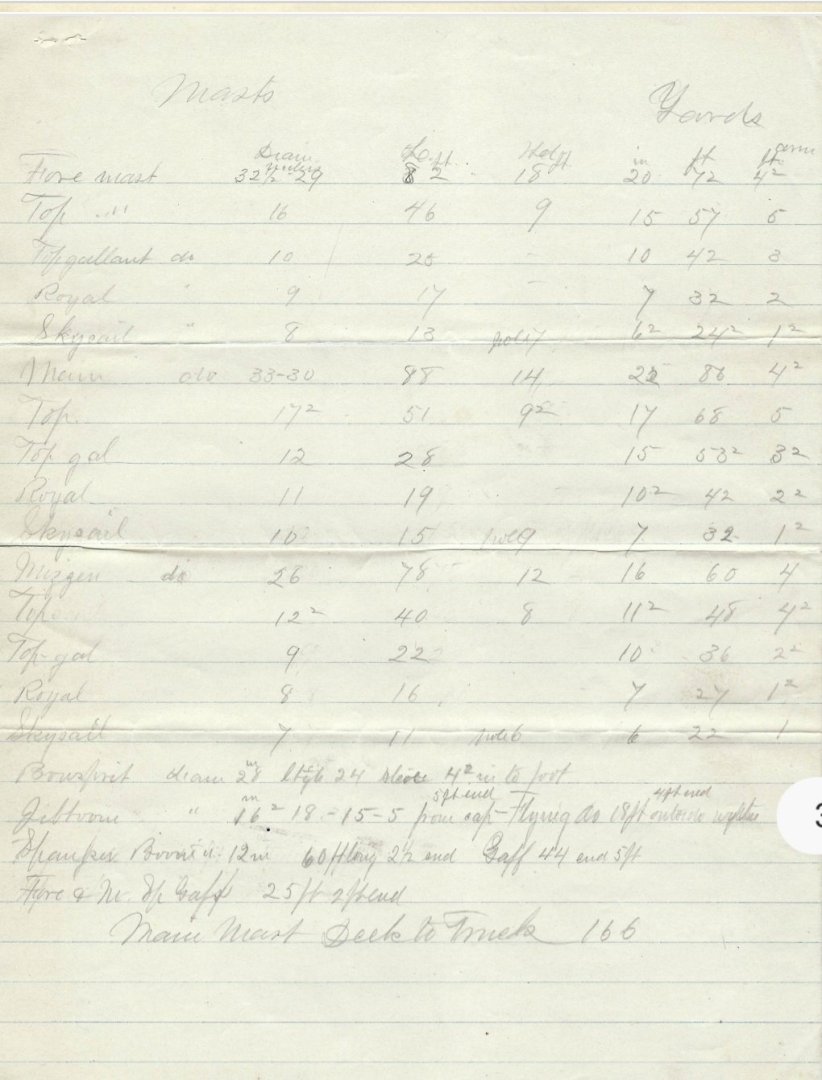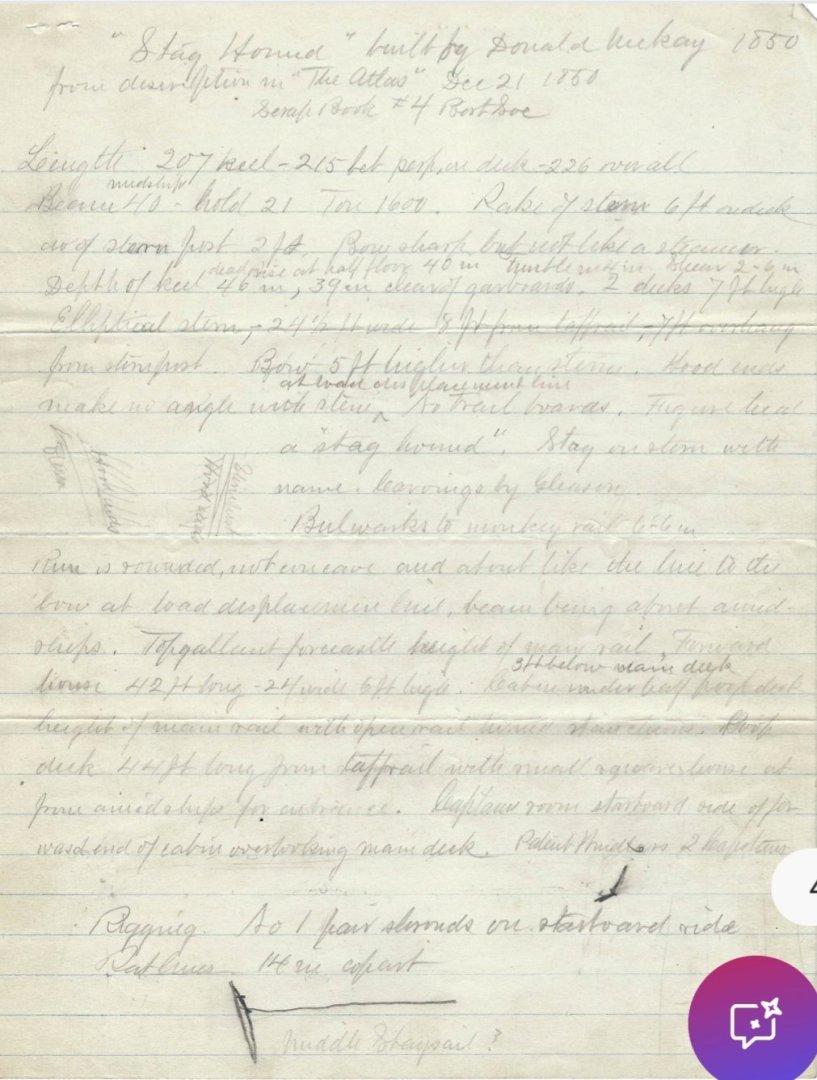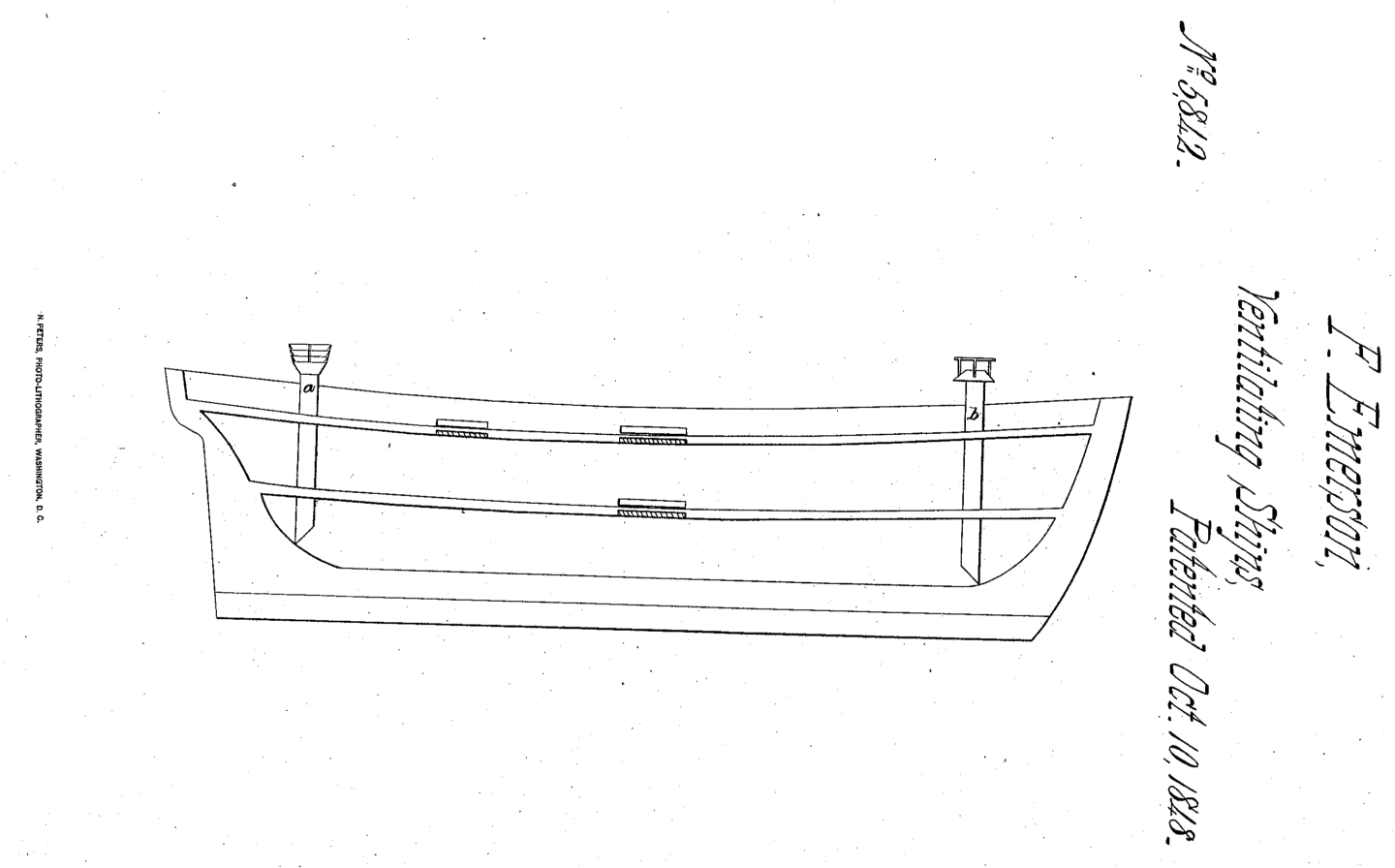-
Posts
2,167 -
Joined
-
Last visited
Content Type
Profiles
Forums
Gallery
Events
Everything posted by ClipperFan
-
@Rick310 Thanks for the further update. Looking at the spectacularly life-like sail and rigging results, I can see where input of a veteran sailor would be immensely helpful. I also mean not to disparage the reputation of captain Arthur Clark. After all, McKay's own son Cornelius had great respect for the man. As for hull ventilators to prevent dry rot, that's such a significant issue, I've got to believe just like salting this had to be standard practice on all wooden vessels. Now, I wonder since they were brass would they have been left natural and polished for routine maintenance or painted to match the hull?
-
@Rick310 I'll have to see when we can get down there. It's about 1 & 1/2 hour drive but my family has a crazy work schedule. If I can take pics with my cell phone, I'll let you know.
- 3,618 replies
-
- young america
- clipper
-
(and 1 more)
Tagged with:
-
@Rick310 I had no idea Ed's spectacular, finished Young America would go on display at Mystic Seaport. Do you have any knowledge as to when she'd be on display or if Ed will make an appearance too? In 2015 I took pictures of her when she and her smaller plank on bulkhead sister were just finished hulls. I met Ed then and was able to get a copy of volume 1 of his book. The others had tet to be written then. A nicer, more humble guy you couldn't meet. It would be a thrill to see his finished replica in person.
- 3,618 replies
-
- young america
- clipper
-
(and 1 more)
Tagged with:
-
Yesterday, Vlad sent us his latest progress on his cad files to create a wooden plank on bulkhead kit, similar to Blue Jacket's Flying Fish. Vladimir's supplier can reproduce these in 1:96th scale (roughly 2'4" at 226') or 1:72nd scale (about 3'2" at 226') not counting her extremely long bowsprit-jibboom. Actually, the supplier could do other scales as well. Although I have yet to work in wood, I have a set of Glory of the Seas bulkheads and already intend to secure a set of Staghound too once they're ready. Even with shipping costs from Europe, they're very reasonably priced. True to his word, Vlad was nice enough to reassure me (and the wistful ghost of Cornelius McKay 😉 ) that his cad design was indeed identical to the McKay model.
-
While we were evaluating correct rake to the masts of Staghound I found two sources which contradict the Boston Daily Atlas account of an extreme 1 & 1/2" to 1'. Another document "US Nautical Magazine, Volume II, 1855" stated her rake was a more moderate 1 & 1/4" to 1'. http://www.bruzelius.info/Nautica/Shipbuilding/USNM-2(1855)_p401.html That sounded more reasonable. Then I took another look at this painting sent to me by The Bostonian Society, which owns this remarkable piece. The curator of their museum confirmed that this is indeed a work of a Chinese artist. That makes it what's known as a Chinese Export Artwork. Why that's significant is these clever artists had prepainted canvasses with entirely finished seascapes readily prepared. They would then present various options to ship's captains who would select their favorite background. Then their vessel would be painted in the foreground as the ship lay in the harbor. To my knowledge, this is the very first authentic, contemporay work of art of McKay's extreme clipper Staghound! The vessel Cornelius referred to as his father's "Pioneer craft of the California Clipper Fleet." For our purposes, we can clearly see her masts rake but at a more moderate 1 & 1/4" to 1'. We now have two authentic sources to confirm that rake and refute the more extreme one described mistakenly by Duncan McLean. FYI: I'm requesting the costs to get a clean copy of this piece. When I get those prices, I will share them with the group here.
-
@Rick310 you learn something new every day. I had no idea that the side ventilators were to aerate the hull; that they had nothing to do with fresh air circulation for living spaces. Maybe that's why Emerson's patent ventilators were also installed? I'm still digging to find out what systems were employed to prevent water infiltration.
-
@Rick310 I had no idea that Captain Arthur Clark was involved in the creation of the magnificent Boucher Flying Cloud model at rhe Boston Museum of Fine Art. The display of her sails looks like they made the Currier & Ives print come to life. This beautiful model and her twin at Addison's Gallery, Phillip's Academy, Andovrt, MA are my favorite. The top image is from Boston Museum of Fine Arts while the bottom is at Addison's Gallery. Too bad Captain Clark missed the unique McKay navel hood, cutwater bow. It still mystifies me how these important nautical devices have been lost for nearly two centuries! I imagine how more lovely she'd look with her prow restored properly. As for apparent lack of side ventilators, they're definitely described in the Boston Daily Atlas article. She's also noted to have Emerson's patented ventilators too. I wonder if they were at least included?
-
Bill, I'm pretty sure Donald McKay's shipyard was equipped with some power equipment. Since this was decades before an established 8 hour day or even weekends, the shipyard was most likely running something like 12-14 hours a day, 6 days a week. Basically sun-up to sun-down. It's well known too that Mr. McKay cared very much for his workers and treated them like family. Consider this too: Stag Hound launched December 21st, 1850 while an even larger clipper ship Flying Cloud launched April 25th, 1851. That's roughly 140 days later....
-
@Luis Felipe Thanks for these detailed bulwark plans. Steve Bradner does nice clean work. One error Rob and Vlad learned the hard way is the Glory of the Seas forecastle height. While the Boston Daily Atlas states that the forecastle deck was mounted at the main rail height, that was not the case. Michael Mjelde sent us a document, an excerpt of a letter regarding a windlass upgrade. To ensure fit, precise internal height of the forecastle deck was given: 5 feet, 9 inches. With decks being 3 & 1/2 inches, that puts the forecastle deck at 6 feet 1/2 inch. To accomplish this, the forecastle deck must be mounted atop the monkey rail. So the only rail surrounding the forecastle is the 18 inch splash rail. Another photo shows about a foot high shelf running alongside the rail which terminates in an elegant curving point a few feet before the bow point of the forecastle. What we're now trying to determine is what apparatus was employed to prevent water ingressing into the ship's apartments, if waves break over the side? My hunch is somehow any water ingested would somehow be redirected to the ship's scuppers. I have yet to find anything to confirm that. This I know for sure. There's no way a vessel would be designed that would ignore the risk of open pipes funneling seawater below!
-
I found the earlier reference. Scott Bradner has a long dissertation on different types of ventilators employed on mid 1800s clipper ships. He refers to a Dec 1994 Nautical Research Journal article which is his source for a lot of his topic. Robert C and Grisel M Leavitt note that gooseneck ventilators illustrated by Lankford on his extreme clipper Flying Fish plans were patented by Ebenezer Knight in 1847. However, they state that there was only evidence of two clipper ships of the 1800s which employed that design. Most likely McKay's ships did not. Instead, they say McKay ships would have a simple 2" to 2 & 1/2" diameter open top straight brass tubes installed between stanchions and these would have terminated just below the main rail. About 5' high. Considering there were a minimum of one ventilator between each stanchion 30" apart on Flying Cloud, it's about 188 open sources for water to get in. That's simply inconcievable, so there had to be ways to seal water out. Here's a link to this fascinating article: https://www.sobco.com/ship_model/fc/details/ventilators.htm
-
@Rick310 now that makes sense. I've had "the devil's own time" trying to relocate the article I read which said that gooseneck ventilators were rarely installed on clippers. If I remember, it had illustrations of straight tubes with some sort of shielding cover instead. My focus was on Emerson's patent ventilators at the time. So I figured it would be my next topic after sharing the info on Emerson's ventilators. But I agree that while these were wooden ships, they employed a lot of innovative designs too. Preventing an ever present danger of any sort of water penetration would have been a top priority.
-
@John Ruy I only just discovered you spectacular build now. There's a detail I must share with you. As a Boy Scout in 1968, our troop visited Mystic Seaport and I had my first opportunity to view the newly restored Whaler Charles W Morgan. At that time she was still a full-rigged ship and not the Bark as she's rigged today. She also had the distinctive transom, identical to the one you felt compelled to discard. Here's a fact that for some odd teason the new restorers reversed. She originally had four large windows in her transom! 1967 restorers were shocked to discover boarded up window frames in their tear down process. Before bringing those windows back, they researched the logs and found an entry by the wife of the captain who mentioned that, in a warm summer day in the Antartic waters, she opened up the big windows to let in fresh cooling air. I own a book "The Charles W Morgan, the Last Wooden Whaler" by Edouard A Stackpole about that restoration which covers these facts in great detail with accompanying photos. This not to disparage your meticulously built model. It's just to set tge record straight about the ship herself.
- 204 replies
-
- marine model company
- charles w morgan
-
(and 1 more)
Tagged with:
-
Rob, I didn't say that you made no sense. I wouldn't think that of you. I said the concept of leaving areas of the ship open to essentially a form of internal flooding doesn't make sense. It occurs to me that there must have been some sort of anti-flooding valve to prevent such occurrences. Incidentally, just in my brief reading, so far at least, the type of gooseneck ventilators illustrated here don't seem to have appeared much on clipper ships. I'm still researching the topic of ship's ventilators along the planksheer actually installed on clipper ships. As usual, I'll let you know what I find out.
-
@rwiederrich as part of my research to locate the elusive Stag Hound drawing described by Cornelius McKay I emailed RevolutionarySpaces.org who apparently now run the old Boston Marine Museum collection. Lori replied and confirmed they're still in posession of the rare model! More exciting news. She sent me a copy of the full Cornelius McKay letter to captain Arthur H Clark. She included a couple images of the hull model. While it's beautiful it's not too helpful. She also sent a rare Chinese export painting of Staghound. Such works of art involved a pre-painted background. Ship's captains would select the one that they liked best. The Chinese artist would then paint the vessel in the foreground. It would then occupy a place of prominence. Most likely it would be in the captain's cabin or stateroom aboard ship. That would mean this painting at some point resided in Staghound herself. I've asked for costs associated to get a nice print of this work. I'm now trying to see if it's possible to get the model out of storage and take useful pictures of it. In addition, I've asked Lori if she has any idea where the accompanying drawing might be found. I'll keep you posted on my progress. One salient point I discovered is in the handwritten notes. A single line: "mainmast from deck to truck 166." Since all main mast spars total 210 feet (including 9-foot pole) tells me the main mast is sunk 44 feet below the main deck. Subtracting that same 44-foot figure from a foremast of 190 feet (including 7-foot pole) results in 146 feet and using the same formula for the mizzen results in 129 (including 6-foot pole). We also know that this countersinking only affects lower masts, as the rest of the dimensions are untouched. So, an 88-foot mainmast is 44 feet above deck, an 82-foot foremast is 38 feet above deck and a 78-foot mizzenmast is 34 feet above deck.
-
@Rick310 Thanks for your compliment of my artwork, I appreciate the encouragement. It consistently amazes me how some of McKay's uniquely different nautical architectural designs, which have been recorded since the first Boston Daily Atlas article of Stag Hound by Duncan McLean in December 1850 have been completely missed. McKay's incredibly rugged navel hood, cutwater design is truly unique. Rob and I have looked extensively and never seen such structures on any other British or American clipper ship. I now think that McLean's description of the McKay bow being plain, lacking head or trail boards confused other maritime researchers who didn't know what to do with these unusual descriptions. Fortunately, with Glory of the Seas we had incontrovertible proof as to the true nature of these ultra-rare structures. Now Rob and I are doing our part to spread the word to the modeling community to set the record straight. As for the challenge of maintaining scale accuracy, all I can say, as an artist working to keep all components scale accurate is to keep referring to actual dimensions of each item you're working on. To me, nothing rapidly ruins the appearance of a model than to lose track of the scale you're working in. For instance, while researching Staghound I read about deck lights (prisms) and side lights (portholes) which were provided for every apartment on her. Here's the thing. Prisms are tiny, 4.5" in diameter hexagons. In 1:96th scale, that's about 1/32nd & 1/2". Rob is going to use little green dots to at least show their existence. We'll see if he actually goes through with it. A more useful fact, which might actually be repetitious, are the long lubber holes on the solid tops. Contrary to plans, lubber holes extend all the way from front to rear, and we have many photos to prove that.
- 345 replies
-
- Flying Fish
- Model Shipways
-
(and 1 more)
Tagged with:
-
Rob, Your logic makes sense. The more McLean articles I read, the greater impression I get that the Boston Daily Atlas publicist concentrated his focus on the wooden structural elements and seaworthy elements of McKay's many vessels. Your logic makes total sense. Another thought that renforces this is the fact that captain Lauchlan McKay was able to restore his badly damaged, huge clipper Sovereign of the Seas while at sea, without cutting a single line. My vote is to add them.
-
@Rick310 thanks for the highly detailed recitation of the meticulous work necessary to prepare one yardarm. I particularly appreciate your delineation of the different thicknesses of thread being utilized for varying uses. It's also reflective of the construction challenges you faced in formatting your replica fished masts. Thanks for the over all look at your beautiful Flying Fish hull.
- 345 replies
-
- Flying Fish
- Model Shipways
-
(and 1 more)
Tagged with:
About us
Modelshipworld - Advancing Ship Modeling through Research
SSL Secured
Your security is important for us so this Website is SSL-Secured
NRG Mailing Address
Nautical Research Guild
237 South Lincoln Street
Westmont IL, 60559-1917
Model Ship World ® and the MSW logo are Registered Trademarks, and belong to the Nautical Research Guild (United States Patent and Trademark Office: No. 6,929,264 & No. 6,929,274, registered Dec. 20, 2022)
Helpful Links
About the NRG
If you enjoy building ship models that are historically accurate as well as beautiful, then The Nautical Research Guild (NRG) is just right for you.
The Guild is a non-profit educational organization whose mission is to “Advance Ship Modeling Through Research”. We provide support to our members in their efforts to raise the quality of their model ships.
The Nautical Research Guild has published our world-renowned quarterly magazine, The Nautical Research Journal, since 1955. The pages of the Journal are full of articles by accomplished ship modelers who show you how they create those exquisite details on their models, and by maritime historians who show you the correct details to build. The Journal is available in both print and digital editions. Go to the NRG web site (www.thenrg.org) to download a complimentary digital copy of the Journal. The NRG also publishes plan sets, books and compilations of back issues of the Journal and the former Ships in Scale and Model Ship Builder magazines.

